A dictionary of M ADE -U P
L ANGUAGES From Adnaic to Elvish,
Zaum to Klingon The Anwa (Real) Origins of Invented Lexicons S TEPHEN D. R OGERS  Contents ) ) ) ) Acknowledgments Id like to thank Peter Archer and the team at Adams Media. Thanks also go out to Andrew Montalbano and Jessica Polny for their help and to Christine Johnson and Analise Rogers for their forbearance. Is now not a good time to mention Volume 2? Introduction Perhaps youve wondered whats involved in inventing a new language. Youve come to the right place. This dictionary is divided into three sections. In the first, and longest, Ill take you on a tour of more than a hundred languages that have been invented for political, artistic, or logical reasons.
Contents ) ) ) ) Acknowledgments Id like to thank Peter Archer and the team at Adams Media. Thanks also go out to Andrew Montalbano and Jessica Polny for their help and to Christine Johnson and Analise Rogers for their forbearance. Is now not a good time to mention Volume 2? Introduction Perhaps youve wondered whats involved in inventing a new language. Youve come to the right place. This dictionary is divided into three sections. In the first, and longest, Ill take you on a tour of more than a hundred languages that have been invented for political, artistic, or logical reasons.
Ill then walk you through the steps you might follow to construct your own language. Then well examine more than a dozen language games that people have developed. THE PURPOSE OF LANGUAGEWhat exactly is a made-up language? It is one that someone invents rather than one that arises naturally in the real world. People invent languages for many reasons:  To give themselves and others a challenge
To give themselves and others a challenge To give depth to a fictional civilization
To give depth to a fictional civilization To explore ideas, such as how a society might be if the native tongue contained no words having to do with time
To explore ideas, such as how a society might be if the native tongue contained no words having to do with time To offer people an auxiliary language that is nationally neutral
To offer people an auxiliary language that is nationally neutral To allow communication between speakers of other languages
To allow communication between speakers of other languages To fix faults in the languages that already exist Without a shared language, we lose the ability to connect with others. We are isolated. As social creatures, we humans have developed many means of communication. We gather and talk.
To fix faults in the languages that already exist Without a shared language, we lose the ability to connect with others. We are isolated. As social creatures, we humans have developed many means of communication. We gather and talk.
We write messages that can bridge space and time. We invent the telegraph, the telephone, the texting device. Being social creatures, we are in many ways defined by our use of language. Try to separate language from any activity we perform. Even those that may be done in silence are described in language, both internally when we consider the activity and externally when we share what weve experienced. Over time, we bond with others who share our languageto the point where we will consider those who speak a different shared language as outsiders.
We identify ourselves by our language. Whats your primary language? To what group does this make you belong? How does this language reinforce your connection to the people who speak the same language? How does this language separate you from others who dont speak the same language? I speak English. I assume you speak English, if only as a second language. That we both speak English does not necessarily mean that we can always understand each other. English has dialects, accents, and regionalisms. (Do you drink soda, pop, or tonic? Do you eat a sub, a hero, or a hoagie?) We adjust our language depending on with whom were communicating.
We talk differently to family members than to strangers, and to people older or younger than we are. We pick up nomenclature and jargon from the subcultures with which we interact. A professor uses different words from those of a plumbernot necessarily better ones, just different. Our words, and the experiences that those words represent, create a way of viewing the world. According to the sixteenth edition of Ethnologue: Languages of the World (2009), there are over 6,900 living languages. (Dead languages, such as Latin, are now used only for scientific, legal, or religious purposes. (Dead languages, such as Latin, are now used only for scientific, legal, or religious purposes.
Extinct languages, such as Anglo-Saxon, have disappeared because of the evolution of the language or the extinction of its speakers.) A CONSTRUCTED LANGUAGEA language is an ordered process of naming thingsphysical things, emotional things, and mental thingsand describing their actions with and their relationships to one another. Although we generally dont have names for things that dont exist, were able to make up such names, should the need arise. For instance, if you were asked the name of the big cat with the two horns, youd probably say theres no such thing. But now that the image of a big cat with two horns is in your head, a part of your brain proposes, judges, and rejects possible names for this imaginary beast. Saber-horned cat? Bullcat? Hornfang? What would you call a bunch of them? (Its important to know whether youre facing one or a pride. A pack? A gang?) What would you call their offspring? Whatever you call this two-horned cat, if you communicate the name to others, and if the term catches on and becomes the official name, youve coined a word. (Remember words like vampire and dragon?) To begin naming things, whether real or imaginary, is to begin to create a unique language. (Remember words like vampire and dragon?) To begin naming things, whether real or imaginary, is to begin to create a unique language.
Youre not alone. The Language Creation Society (www.conlang.org) wont even hazard a guess as to how many languages have been made up or how many of those constructed languages are currently in use. CREATING A GRAMMAR Making up new names or words for actions or descriptions isnt the only part of creating a language. The different elements of the language must have an ordered relationship to one another. We call this grammar. Grammar allows us to combine groups of words to create meanings.
Constructed languages must do the same thing: They create a morphology (a structure of meaning for various words within the language), syntax (how to combine those words into sentences), and phonology (how those words and phrases and sentences sound). In a natural language such as English, morphology, syntax, and phonology grow up gradually over time, influenced by other languages and the spread of English. In a constructed language, the creator or creators must invent these things, basing them upon an existing or a newly created foundation. I make up words as I point at things. Staz is pen and hin is cup. Have I created a language? Not yet, because I dont have a grammarjust a vocabulary.
I decide that adding an -a means the pen is mine, adding an -e means the pen is yours, adding an -i means the pen belongs to someone else, adding an -o means the pen belongs to everybody, and adding a -u means the pen belongs to nobody. Now Im beginning to develop a syntax, one of the elements of grammar. I can continue with this, adding a morphology and a phonology, and at the end of it Ill have a constructed language (or conlang). The made-up languages that appear in this dictionary were created by people who went through just such a process. In some cases it took someone a lifetime. In other cases, the creator built a language that was perhaps added to by others.
The resultant languages in either case are often models of beauty and complexity. MADE-UP LANGUAGES Because this dictionary is a printed work, well focus on languages designed to be written and/or spoken. Most are, for simplicitys sake. That said, theres no reason a language needs to meet this criteria. (Obvious exceptions are sign language and computer languages.) Human biology dictates how we communicate verbally. The range of available sounds is determined by the shape of ones jaw, teeth, tongue, and lips, not to mention the nature of the human respiratory system.
Next page
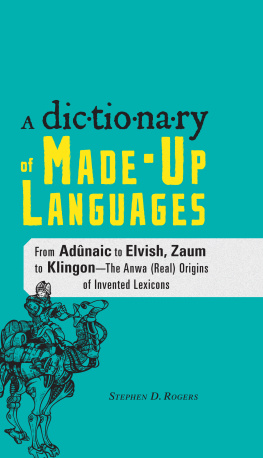
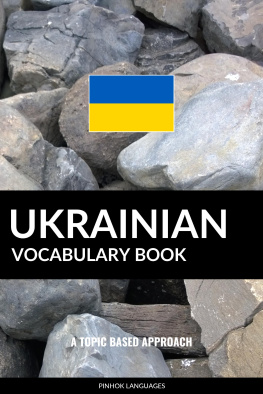

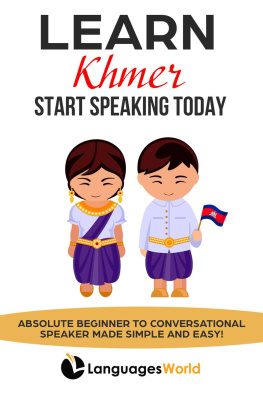
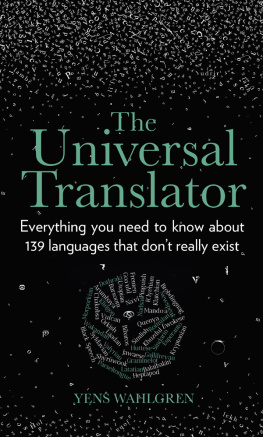
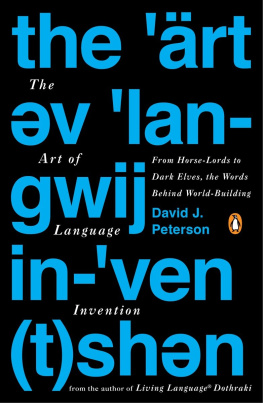
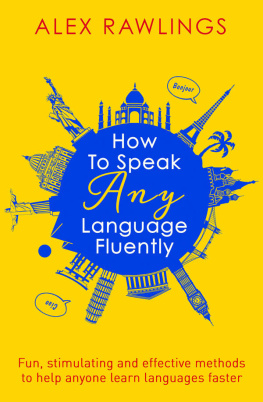

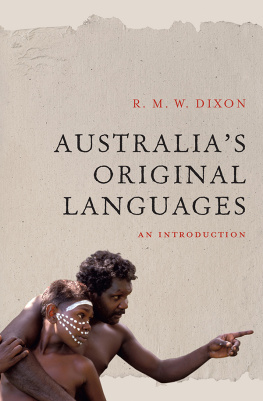
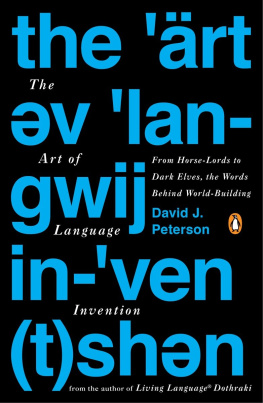

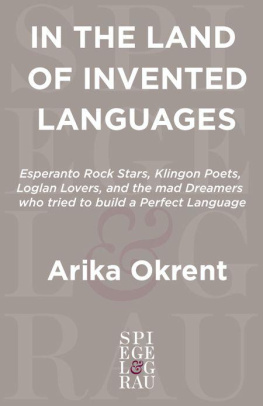
 Contents ) ) ) ) Acknowledgments Id like to thank Peter Archer and the team at Adams Media. Thanks also go out to Andrew Montalbano and Jessica Polny for their help and to Christine Johnson and Analise Rogers for their forbearance. Is now not a good time to mention Volume 2? Introduction Perhaps youve wondered whats involved in inventing a new language. Youve come to the right place. This dictionary is divided into three sections. In the first, and longest, Ill take you on a tour of more than a hundred languages that have been invented for political, artistic, or logical reasons.
Contents ) ) ) ) Acknowledgments Id like to thank Peter Archer and the team at Adams Media. Thanks also go out to Andrew Montalbano and Jessica Polny for their help and to Christine Johnson and Analise Rogers for their forbearance. Is now not a good time to mention Volume 2? Introduction Perhaps youve wondered whats involved in inventing a new language. Youve come to the right place. This dictionary is divided into three sections. In the first, and longest, Ill take you on a tour of more than a hundred languages that have been invented for political, artistic, or logical reasons. To give themselves and others a challenge
To give themselves and others a challenge